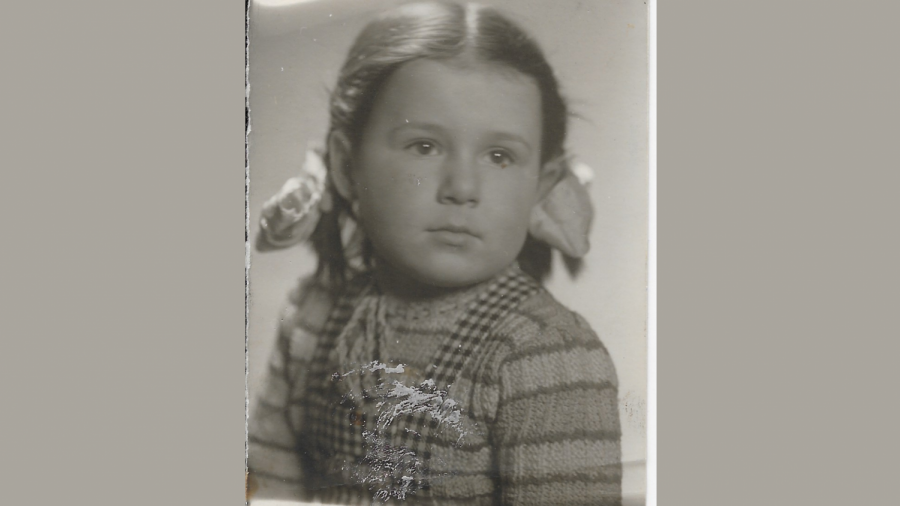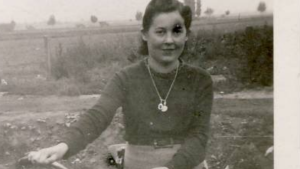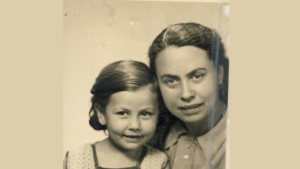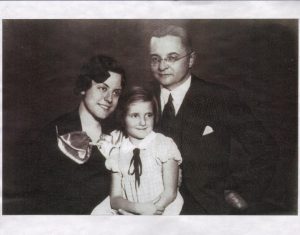The St. Louis Kaplan Feldman Holocaust Museum is allowing us to republish a portion of these Oral Histories projects as a celebration of life and a crucial part of honoring and remembering the past. Please follow the provided links to additional recordings.
Felicia Graber was born in March of 1940 in the city of Tarnow, Poland. The Germans had already invaded Poland at the time of her birth. Although her parents had moved somewhat away from the very strict Orthodox ways of her grandparents, they were still Orthodox, observing the laws of Kashrut (dietary laws) and the Sabbath (traditionally a day of rest, spiritual renewal and prayer). Her grandfather and father were both watchmakers and owned a successful watch and jewelry store.
In the summer of 1942, her paternal grandparents and her maternal grandfather were deported – probably to Belzec death camp. (Her maternal grandmother had died in 1934.) In the fall of 1942, she and her parents were ordered to move into the ghetto that was established in the city by the Germans.
After being almost miraculously taken out of a transport to the Belzec death camp with her parents, her father managed to acquire a set of false Christian papers for her mother and a baptismal certificate for her. She and her mother were smuggled out of the ghetto and ended up in Warsaw living as Christians.
Felicia was being brought up as a fervent Catholic, going faithfully to mass every Sunday and reciting the Lord’s Prayer every evening. It is here, in Warsaw, that her father joined them in 1943 after his escape from the ghetto as it was being liquidated. He too had a set of Christian papers but with a different name than she and her mother. As a result, he could not officially live with them and was introduced to Felicia, who did not remember her father, as the brother-in-law of her mother.
In August of 1944, when the Polish Warsaw Uprising by the Polish underground against the Germans was defeated, she and her parents were expelled from their apartment and, together with thousands of other Poles, driven out of the city to a transit camp in Pruszkov. Many Poles were transported from there to Germany as slave laborers, but she and her parents managed to get released and to find shelter in a farmhouse in Chiliczky near Grodzisk Maz, about one hour out of Warsaw.
They remained with the farmer, his wife, and two daughters until Poland was liberated by the Russians in the spring of 1945. At no time did the farmer, his family, or anyone in the village suspect that the three were Jews.
Liberation
After liberation, her father managed to re-establish himself as a watchmaker and jeweler in Zopot, a resort town in the north of Poland near Gdansk (the former Danzig). It is here that her brother was born in 1946. However, as the Communist grip on Poland tightened, her father’s situation as a “capitalist” became precarious. In 1947, he managed to get a visa to leave Poland for Belgium where he and his family found political asylum.
It was here, in Brussels, in 1947, at the age of seven that Felicia is told the truth about her identity as a Jew and about the true identity of her “uncle.” Both revelations came as a shock to her and it took some time before she was able to accept those facts.
In 1951, she and her family moved to Germany for financial reasons. Growing up as a Jew in post-war Germany was a lonely existence for a girl who, although not observant, had become by that time thoroughly Jewish and was aware of Germany’s and the Germans’ role in her people’s and family’s recent past.
In 1959, she met and married an American chaplain serving with the U.S. Occupying Forces in Germany. Her return to her roots came full circle when she joined her new husband’s Orthodox Jewish lifestyle.
Her daughter was born in 1961 and her son in 1963, both in an army hospital in Germany. She arrived in the U.S. in 1963.
Felicia Graber’s father, Salomon Lederberger, has an interview on tape in the archives of the St. Louis Holocaust Museum and Learning Center. You can also read some of Felicia’s writing as part of the Museum’s Memory Project.
Listen to Tape 1 / Side 1 of Felicia’s Oral History

















